All about the Barbados cherry
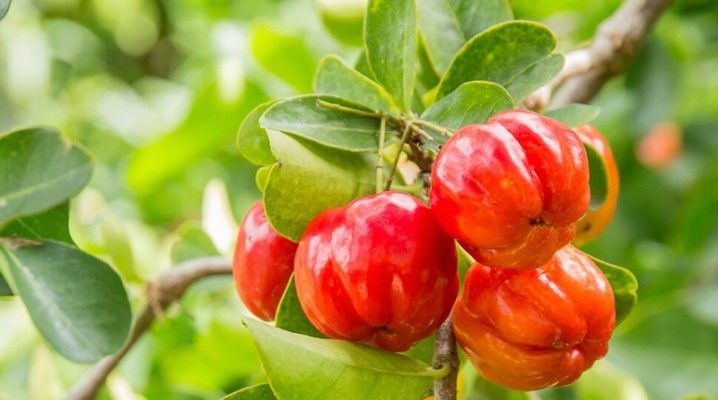
This amazing culture is still little known to domestic gardening specialists. However, interest in it is rapidly increasing, which is explained by the remarkable qualities of its fruits and the high degree of their usefulness for the body.
Its medicinal properties are truly unique and undeniable, as well as an unusually large amount of various vitamins and microelements contained in berries. The fruits of the culture and their juice are invariably used in the field of medicine, cosmetology and food.
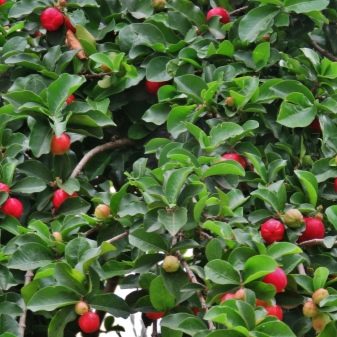
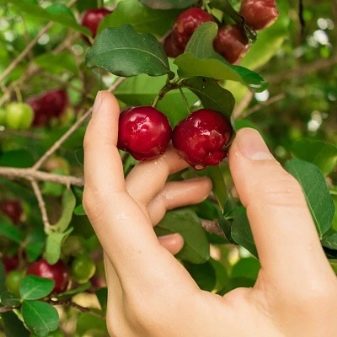
general description
Initially, acerola grew within the island state of Barbados, and then spread to the territories of America, Mexico and the Caribbean. At the present time, Malpighia pleases residents of almost all continents with its delicious and healing fruits. It is high time to nurture it in Russia as well. Barbados cherry grows productively in the tropics and subtropics, preferring loam. The plant is an evergreen tree, often reaching a height of 3–6 m. The varieties of the culture are divided into two types: sweet and sour. The leaves of acerola are oval in shape, dark green shades, even, giving a shine. The size of the leaf blades is 5–10 cm in length and 2.5–5.5 cm in width.
The flowers are pinkish, no more than 2 cm in diameter. They bloom at the beginning of summer and continue this process until autumn. Quite fragile roots of the culture are located superficially. Berries are picked from summer to autumn. Fruits are round, slightly flattened, 1.5–4 cm in diameter, weighing up to 5–7 g. The consistency is very juicy, and its color varies from variety to variety: from yellow to orange tones. By their taste, the berries are sweet, often with a sourness or tart aftertaste. There are three small rounded bones inside the fruit. The berries of the culture are used in various fields: in food, medical and cosmetic. The juice is included in the compositions of fortified drinks, cosmetics (for skin and hair care).
Acerola is often used in the manufacture of soaps, foamy liquids, gel formulations, etc.
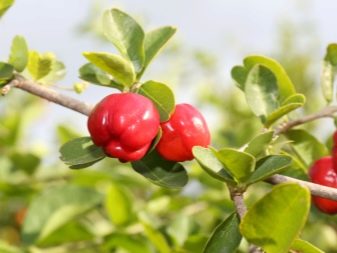

In other words, the range of application of the fruits of the culture is extremely wide, especially for medical purposes, where their medicinal properties are absolutely undeniable.
- To reduce the effects of oxidative processes, antioxidant and hepatoprotective properties are used, since the fruits contain carotenoids, anthocyanins and vitamin C. Berry juice provides effective liver protection (at the cellular level) from the negative effects of alcohol.
- In order to prevent obesity. The juice successfully normalizes blood sugar parameters, blocks weight gain and an increase in cholesterol production, stimulating metabolism in the body, increasing its tone.
- For the prevention of the development of diabetes mellitus. Antioxidants contained in the fruit successfully block negative processes at the level of micro- and macrovascular diabetes. The juice effectively blocks oxidative stress caused by free radicals, which helps keep blood vessels healthy.
- In order to ensure the health of the skin. Due to the content of a number of nutrients in the fruits (copper, vitamin C, etc.), the texture of the skin is improved, wrinkles are reduced, the skin is qualitatively moisturized and rejuvenated.
- For the improvement of cardiovascular activity due to the vitamin B5 contained in the berries, which is involved in the processes of blood formation.
- To prevent the development of colon cancer.
At the same time, 200 g of culture contains 31 calories. The richest composition of berries is guaranteed to provide the body with the right amount of carbohydrates, proteins and energy.


Planting and leaving
It is more expedient to plant a crop in spring and summer. For the productive development of plants, a fertile, well-drained soil is selected. The culture does not react well to stagnant moisture. For planting, bushes with closed roots are recommended, which are more likely to take root. Bushes with an open vegetative organ, although they make it possible to assess the quality of the roots, are more difficult to take root. Therefore, to improve this process, we recommend pre-soaking them in a stimulant solution for 30–40 minutes. In the course of growing a crop, it is necessary to adhere to some rules.
- Plants should not be planted in areas with direct sunlight as they prefer diffused light.
- Trees develop better on the southern side of the plots at 20-24 degrees. At night, the temperature level should not be lower than 15 degrees, as they begin to slow down development and throw off the leaves.
- For intensive development of trees, it is necessary to systematically fertilize. Complex dressings are usually added in the spring and summer. To a greater extent, trees need organic fertilizers. In the fall, a mullein should be laid under them.
Acerola is often grown by seeds. With the beginning of the emergence of sprouts, the bushes are subject to an annual spring transplant. In open soils, trees are planted after 3-4 years of growth. For this, a transshipment method should be used, which saves the roots from damage, reduces the level of transplant stress. Some experts advise, when planting in the soil, to trim the roots, and to process the cuts, which stimulates a more intensive process of root development, but leads to a slowdown in the growth of the trees themselves.
The berries are picked in the course of their ripening. And they do it asynchronously during the summer. Ripe fruits do not have good keeping quality and are poorly transported. For their storage, it is better to use:
- drying;
- freezing;
- canning.
In industrial volumes, when harvesting berries, the method of sublimation is used (quick freezing with further drying). This method allows you to preserve the greatest amount of nutrients.
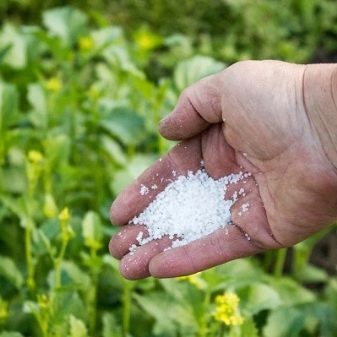
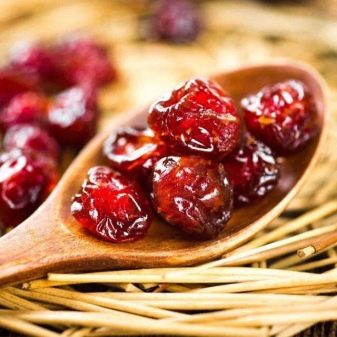
Reproduction
In nature, the culture reproduces with the help of seeds and is remarkably adaptable to various soils. It is great for growing at home (in pots or containers).
In the latter case, the culture is grown using side shoots, cuttings or seeds.
- Cuttings 8–12 cm long and a couple of leaves are cut from lignified shoots. Before planting, they should be kept for two months in a basement or refrigeration unit, and planting should be carried out in the spring, deepening them into the peaty-sandy soil by 1.5–2 cm. Before that, it is useful to soak the ends of the cuttings in Kornevin's solution. Rooting occurs more efficiently in greenhouses, where diffused lighting is organized and a temperature regime of 22-24 degrees is maintained. On top of the container, plastic bottles with a cut-off top are installed. Care consists in the organization of ventilation and moderate irrigation with warm water. Rooting of cuttings usually takes place within two months. Then they are transplanted into pots with a pre-prepared substrate. The blanks obtained by this method can bear fruit in the 2nd year.
- When planting seeds, they should first be scarified due to the hardness of their surface. Or just soak overnight. For planting, a typical container is used, where peat-sandy soil is previously placed, it must be fertile and loose. A drainage layer should be laid in the lower part of the container - the culture does not tolerate stagnant water. The pots are covered with foil and placed in a warm and bright place.The sprouts appear within 14-30 days. Caring for them consists in daily ventilation and moistening (if necessary) with a spray bottle.
When a pair of true leaves appear on the seedlings, they are carefully transplanted into separate containers.
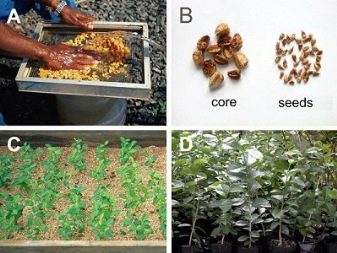
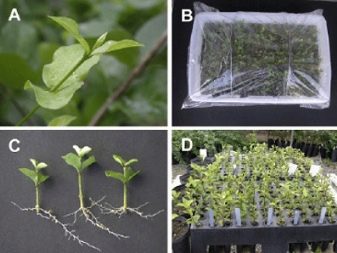
Diseases and pests
The culture is characterized by a significant immune potential against major diseases and pest attacks. It can withstand waterlogging or moisture deficit relatively easily. Disease with standard rot is not dangerous for her.
The culture is not susceptible to infection with powdery mildew and scab. In Russian conditions, when it is cultivated, there are no enemies from among the harmful insects. It is extremely rare for trees to be attacked by caterpillars, but this happens only in cases of their proximity to intensively infested plants.

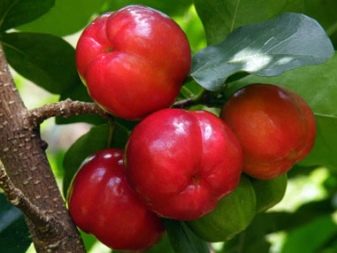









The comment was sent successfully.